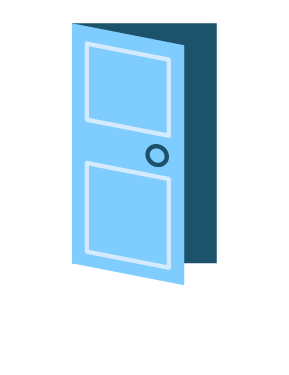Note! In the run-up to the new policy plan period 2025-2028, the Mondriaan Fund’s application system will be closed for a week in order to make adjustments to grants and application forms. The deadline for applications in 2024 is Monday 30 December 2024, 16.00 (Dutch time zone) / 11.00 (Caribbean time zone). Read the full message here.
For whom
With this grant, anyone without intention to sell the work can commission visual artists to create new works of art accessible to the public in the Netherlands or the Caribbean part of the Kingdom. Art Commission grants are for parties in the public or private sector or for public-private partnerships such as individuals, organizations, institutions, companies and so on.
The Mondriaan Fund offers Art Commission grants to stimulate the commission of relevant publicly accessible artistic projects and commissions for artists. This is intended to result in closer involvement of (market) parties in the creation of visual arts and therefore in improved quality and visibility of contemporary Dutch visual arts for a relevant audience.
For what
Art Commission grants are intended for the production of publicly accessible works of art. This could be a single commission for 1 or more artists, or a longercollaboration, for example, between a museum and an artist which centres on the intensive following and presenting of the work. Or the production of new work during a period of no more than 4 years.
Development contribution for commissioning parties outside of the visual arts and heritage sector
Would you like to commission a work of art that is accessible to the public, but are not familiar with the ins and outs of commissioning art? Potential clients who are not situated in the museum or professional art platform circuit can first apply for funding to help develop their project. This will help you gain professional expertise for the creation of a plan or for covering the costs of the study or sketch phase of the commission.
How much
The amount of the stipend is individually determined for each application. That amount can be awarded in the form of:
- A grant for a concrete commission, covering no more than 50% of the costs, such as production and presentation;
- A grant for an exceptionally longer collaboration with an artist, totalling no more than 50% of the costs for a period of up to 4 years;
- A grant for the development phase of a commission, totalling no more than 70% of the costs, up to a maximum of € 15,000.
Apply
Applications can be submitted at any time of the year, using the Mondriaan Fund’s online application system. You must first establish an account with the Mondriaan Fund before you can apply. When determining your dates, always allow for a processing period of 3 months from the time your application is submitted in full, as grants cannot be awarded retroactively. However, due to the many applications to the fund, the processing time can take longer than expected.
The following is based on the deelregeling Kunst Opdracht (in Dutch).
Conditions
- Anyone can apply, except for individual artists, art education institutions, post-graduate institutions and predominantly sales-oriented commercial art institutions. Applications may be submitted by, for example, institutions for visual arts, cultural heritage or design, municipalities, social and/or community organizations, such as (sports or retailers’) associations, schools, hospitals, churches, residents’ associations and foundations. Businesses, companies and individuals may also apply.
- The applicant must be established in the Netherlands or the Caribbean part of the Kingdom.
- The work to be commissioned must be accessible to the public and presented in the Netherlands or the Caribbean part of the Kingdom.
- The work may not be for profit.
- A realistic fee for the artist is mandatory and must be included in the budget as part of the production costs. The guidelines of the Dutch Government Buildings Agency can be used to determine the amount of the fee for permanent works. In the case of temporary exhibitions or presentations with no sales objectives, the artist honoraria guideline should be followed.* Organizations that do not have the presentation of visual arts and/or heritage without sales as a core activity can apply for the artist honorarium as part of the Art Commission grant.
- The artist receiving the commission must:
- be working for at least 1 year as a professional visual artist and be registered as such with the Kamer van Koophandel (KvK); or
- have had at least 3 years of higher art education and have been working as a professional visual artist for at least 1 year; or
- have been working as a professional visual artist for at least 3 years.
- The commissioned artist must be artistically active in the visual arts and in that capacity be embedded in the professional visual arts practice in the Netherlands and/or the Caribbean part of the Kingdom.
- If the project concerns a permanent work of art, it may not be moved or traded without permission of the Mondriaan Fund. In that case, realistic compensation must also be paid to the artist.
- All cultural institutions subscribe to the Fair Practice Code (Dutch only), the Culture Governance Code and the Diversity & Inclusion Code (Dutch only). Compliance with the Fair Practice Code automatically means that the institution implements the guidelines on artists’ honoraria.
- The financial contribution from the client must be in acceptable proportion to the contribution requested from the Mondriaan Fund.
*Please note: The Artist’s Fee Directive was reassessed in 2023 and can be consulted at www.kunstenaarshonorarium.bknl.nl. The revised guideline will be applied from January 1, 2025.
Assessment
The Mondriaan Fund staff checks the submitted applications and attachments to ensure that they are complete. Once an application is complete, it is submitted to the committee that advises on awarding the Art Commission grant.
An Art Commission grant can only be awarded if the committee advises to that effect. In addition, the advisory committee can make recommendations concerning the amount of the financial stipend and the period for which this is valid.
Due to budgetary restrictions, we are unfortunately not always able to award grants to all applications that receive positive advisories from the committee. In this case, the Mondriaan Fund Board asks the advisory committee to prioritise the positive advisories. This means that an application may receive a positive advisory, but a grant is nevertheless not awarded.
The advisory committee assesses your application on the basis of:
- Information from the commissioning party concerning your own profile.
- The plan, including a motivation for the choice of the artist and the commissioned work, the way in which the collaboration offers added value for both artist and commissioning party, a study sketch of the work, and a presentation plan that explains how a suitable audience will be reached.
- Explanation of the work of the artist.
- Curriculum vitae of the artist.
- Visual documentation of the work of the artist, including a plan or study sketch.
- (General) budget with financing plan, including an explanation of financial agreements made between the client and the artist, with a realistic artist fee made available by the commissioning party.
- Where applicable: long-term plans for the work, such as a possible purchase after a longer working relationship between a museum and an artist.
The advisory committee considers the following criteria:
In the case of a one-off commission or long-term collaboration:
-
Your own role and qualities as a commissioning party
- Do you inspire sufficient confidence that as a commissioning party, you are able to realise successful, publicly accessible art? Consider e.g. your vision regarding commissions, your organisational qualities, expertise and the fulfilment of your role as commissioning party.
- In the case that you have previously been a commissioning party: Were earlier commissions for artists and/or collaborations positively received? If so, this will be considered favourably.
- If this is your first commission, this will be considered favourably.
-
The quality of the artist’s/artists’ work to date*
- Does the artist/do the artists have a distinctive artistic vision and is this convincingly conveyed in previous work?
- What is the quality of the oeuvres? Consider e.g. the significance of the oeuvre, the inherent imaginative strength, the command of the selected mediums and/or techniques and the work’s power of expression.
- Do the oeuvres show development appropriate to the phase of the professional practice?
-
The quality of the artist’s cultural entrepreneurship*
- Is the artist actively focused on developing their practice, entering into collaborations, entering into the public eye and finding an audience for their work?
-
The significance of the commission
- Is the commission significant in relation to the context within which the work will be presented? Consider e.g. the local and regional context or a topical, social context.
-
The quality of the commission
- Are the artistic principles of the plan of an appropriate quality and are they convincingly conveyed in the planned work?
- Is the plan of an appropriate quality? Consider e.g. the significance of the plan, the inherent imaginative strength, the command of the selected mediums and/or techniques and the plan’s power of expression.
- Is the plan realistic?
-
Visibility of the work and the quality of the presentation plan
- Is the work sufficiently visible to the audience?
- Does the plan include a convincing strategy to reach a relevant audience?
*The background and context of the professional practice will be taken into consideration during the assessment, e.g. schooling, cultural context and the nature and duration of the professional practice.
In the case of development:
-
Your own role and qualities as a commissioning party
- Do you inspire sufficient confidence that as a commissioning party, you are able to realise successful, publicly accessible art? Consider e.g. your vision regarding commissions, your organisational qualities, expertise and the fulfilment of your role as commissioning party.
- In the case that you have previously been a commissioning party: Were earlier commissions for artists and/or collaborations positively received? If so, this will be considered favourably.
- If this is your first commission, this will be considered favourably.
-
The significance of the commission
- Is the plan significant in relation to the context of the project? Consider e.g. the local and regional context or a topical, social context.
-
The quality of the plan for the commission
- Are the artistic principles in the plan of an appropriate quality and does this inspire confidence that it will result in a good commission?
- If applicable: is there sufficient confidence in the expertise of the involved professionals?
Checklist
To process your application, The Mondriaan Fund needs information. All of this information can be submitted in the application form itself, along with documentation that you can upload. Below is a checklist that follows the layout of the application form and contains all the information required.
Tip: collect all your information before you start filling out the online application form. Your attachments should be uploaded as PDFs. Please note: make sure that your documents meet the stated conditions. Otherwise, we will unfortunately not be able to process your request. Do not exceed the number of pages where a maximum is indicated.
Attachments from the commissioning party
Information about the commissioning party (individual max. 2 pages / organisation max. 5 pages)
- Describe your own profile as the person or organization offering the commission. Give an explanation of the organization, the institution or the initiative. Also describe any commissions already given to artists and/or possible collaborations with cultural institutions ( for example art platforms or museums). Outline how the organisation works towards the production of publicly accessible art. Consider e.g. your vision regarding commissions, your organisational qualities, expertise and the fulfilment of your role as a commissioning party.
- If you are applying on behalf of a cultural institution, briefly describe the mission, vision and objective of the organization, its programme of activities and/or collection. Provide insight into the public reach and visibility of the activities and, if applicable, the collection.
Plan (15 pages maximum)
-
The development stage of a project on commission
Describe and motivate:
- The priniples and objective of the commission or long-term collaboration.
- What you want to develop or research.
- The context of the project.
- What kind of expertise you are engaging to achieve this.
-
A commissioned work of art or long-term collaboration
Describe and motivate:
- The substance of the concept and the objective of the commission.
- How the collaboration brings added value for the oeuvre of the artist and for yourself as the commissioning party.
- The selection of the artist and the commission.
- The context of the project.
- The study sketch.
- Long-term plans for the work, including potential purchase.
- Your own contribution to both content and financing.
- Financial and business agreements with the artist about fee, ownership, legal rights and other relevant issues.
- The visibility of the work and the presentation plan outlining how the public will be reached.
Applying codes
All cultural organizations in the Netherlands subscribe to the Dutch Fair Practice Code, the Governance Code Cultuur (Governance Code for Culture) and the Code Diversiteit & Inclusie (Code on Diversity & Inclusion), which automatically means that the institution or organization applies the guideline for artists’ fees.
Attachments concerning the artist (unless this concerns a development stipend for a yet unknown amount)
Explanation of the work (1 page maximum per artist)
Describe the artistic vision, how this is expressed in the work, and the selected mediums and/or techniques. How has the work developed, and what has been done to achieve this development? Also state how the entrepreneurship is furthered, such as through entering into collaborations, entering into the public eye and finding an audience for the work. Mention any possible collaborative connections.
Curriculum Vitae (2 pages maximum)
Submit a brief curriculum vitae with the most important information about the professional practice, notably focused on the last 1 to 4 years, such as exhibitions (indicate solo or group), commissions, awards and publications, indicating the year of each. Also mention associated activities, such as teaching, advisory or jury positions. Include all of these documents in a single PDF.
Visual documentation
Create a single PDF including visual documentation of work from the last 1 to 4 years, in no more than 20 digital images (total maximum of 100 MB). It is important here that the documentation is representative of the work and relevant to the application. Ensure that the materials used are well distinguished. You can also upload sound, video or film fragments. In that case, the total size and duration of the submitted documentation, including both the visual presentation and separate fragments, can be no more than 300 MB and no more than 15 minutes in duration. Click here for technical specifications for your uploaded documentation.
Please note: In the case of new work, the (visual) documentation material is a mandatory part of your application. If you don’t upload any documentation material, your application cannot be processed.
Documentation list (2 pages maximum)
Include a numbered documentation list (in PDF) that corresponds with your visual documentation, with descriptions or captions for the relevant images, sound, video or film clips. (For example: 01, Title, 2020, loop 2 min.)
Please note: do not use hyperlinks in the PDF with (visual) documentation material and in the documentation list. We cannot accept hyperlinks (to web pages for example) because the supplied image material may not be adjusted during the processing of the application.
Where applicable:
Statement from the participating artist or artists
This must include permission for the application, including mention that the artist is aware of and in agreement with the financial structure of the commission. Include all of these declarations in a single PDF.
A recent (less than 1 year old) and valid registration with the Kamer van Koophandel (KvK, Chamber of Commerce)
Bank details
If your application is approved, we need your bank account number in order to transfer funds. If the organisation has not previously submitted an application to the Mondriaan Fund or if the account number has changed since the previous application, please upload a recent bank statement clearly stating the name of the account holder and IBAN/bank account number of the applying institution. Applicants established in the Caribbean part of the Kingdom can provide a bank statement or other document from the bank stating the name of the account holder and bank account number.
If you have a business bank account for your one-person business, include a recent (less than 3 months old) copy of your registration with the Kamer van Koophandel (KvK, Chamber of Commerce), showing that you are the sole proprietor of the account.
Personal Records Database (BRP) extract
If the artist or artists do not have Dutch nationality, include a recent extract, no more than 1 year old, from the Basisregistratie Personen (BRP) where they live, showing that they reside in the Netherlands.
Diploma, degree or school deregistration
If the artist or artists have been working professionally for less than 3 years, we need a copy of their diploma or degree from the arts educational institution, or else a statement from the art school indicating that the artist left before graduating. Include these in a single PDF.
Global budget
If the application concerns a long-term collaboration, a global budget and financing plan is required. It must include a realistic honorarium for the artist, to be paid by the client giving the commission, along with production costs and expenses, for example for transport, travel, lodging, etc. It should also include a declaration that the project could not be realized without assistance from the Mondriaan Fund. Guidelines for artists’ fees must be adhered to.
Specified budget with financing plan
Click here for an explanation of budgets for institutions or organizations (in Dutch).
If the application concerns a concrete commission or a development stipend, we request a specified budget and financing plan that covers the total, and not just the segment for which you are applying for assistance from the Mondriaan Fund. This also needs to include a realistic fee for the artist, along with production costs and expenses, in which the guidelines of the Dutch Rijksgebouwendienst (Government Buildings Agency) or guidelines for artists’ fees are respected. Arts and heritage institutes may not apply for the artists’ fees.
Letters confirming contributions from third parties
Include all letters in a single PDF.
Price estimates covering crucial entries in the budget
Include all cost estimates in a single PDF.




